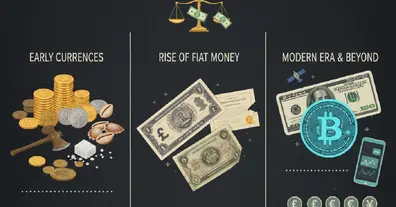Доставка з Канади в Україну разом із Meest: особливості та переваги
Щоб отримувати посилки та грошові перекази вигідним і безпечним способом, працює доставка з Канади в Україну від поштового оператора Meest.

Щоб отримувати посилки та грошові перекази вигідним і безпечним способом, працює доставка з Канади в Україну від поштового оператора Meest.

У квартирі-студії освітлення виконує роль просторового інструменту, що задає функціональні межі без додаткових перегородок. Компактний формат приміщення потребує точного планування світлових сценаріїв. Саме тому в системах зонування часто використовують точкові світильники

Вибір ноутбука сьогодні визначається не лише «залізом». Для багатьох користувачів головним стає не максимальна потужність у тестах, а комфорт щоденної роботи без збоїв і компромісів. Саме тому перехід на екосистему Apple дедалі частіше розглядають як надійне та практичне рішення

У сучасному світі поняття «зручного сервісу» давно вийшло за межі простої ввічливості персоналу чи швидкої доставки. Сьогодні клієнт обирає бренд не лише за продуктом, а й за цінностями, які цей бренд транслює. Одним із найпотужніших маркерів таких цінностей стає інклюзивність.

AI-агенти поступово перебирають на себе рутинні онлайн-завдання — від бронювання подорожей до обробки звернень клієнтів. Стаття пояснює, що таке агентний веб, чому він уже працює та як змінить бізнес, маркетинг і інтернет у найближчі роки.

2025-й – «Рік гральності» Star Citizen! Робоче Обʼєднання серверів, рекордний онлайн, дві нові зоряні системи та підтримка VR. Кріс Робертс підбиває підсумки рекордного року та розкриває деталі стану розробки Squadron 42. Читайте про революційні зміни та майбутнє Всесвіту!

Як маленький YouTube-канал може приносити гроші через консультації, навіть без великої аудиторії, реклами та складних систем.

Як реально заробляти на Python: від фрілансу й автоматизації до SaaS і стабільної кар’єри. Без ілюзій і швидких схем.

Останнім сонячним промінчиком сяє - Куда я жмав #15 Хочу все і одразу, маю ніхуя і ніколи Конічіва, пампкін, після майже двотижневої перерви повертаюся до тебе з новим випуском куда я жмав і дрібкою творчих пертурбацій цієї розсилки.

Друга частина «Трилогії про вбивче кохання», і тут ставки стають ще вищими. 🤫

Азербайджан розташований в одному з найнебезпечніших регіонів світу, затиснутий між Росією на півночі та Іраном на півдні.
Стратегія національної безпеки на 2025 рік чітко формулює нову геостратегічну парадигму США, зосереджену на «розподілі та перенесенні тягаря» з союзниками та партнерами в регіонах, геополітика яких безпосередньо перетинається з американськими стратегічними інтересами.
За даними шести джерел, ознайомлених з матеріалами американських спецслужб, американські розвідники продовжують попереджати, що президент Росії Володимир Путін не відмовився від своїх намірів.

Що слухали в Європі 15-21 грудня

Інструменти на кшталт GitHub Copilot, ChatGPT і Claude здатні генерувати функціональний код із природномовних запитів. Проте ця технологічна революція принесла з собою несподівану загрозу кібербезпеці, яку дослідники назвали слопсквоттингом.
Журналісти встановили особу людини, що ймовірно керує скандальним телеграм-ресурсом "Відсіч", який спеціалізується на проведенні інформаційних атак та тиску на підприємців. Адмініструванням цього каналу-медіакіллера, схоже, займається 29-річний киянин Іван Хоменко
Іноді мені здається, що я застрягла між «ще не» і «вже не».
Від ідеї до готового продукту з дизайном і рекламою — без коду і майже без грошей

елегантно, немов тихий сон, прибуває Куда я жмав #14 it costs money to make money Bonsoir ма потат френс, вечірнє недільне чтиво від куда я жмав мчить до ваших скриньок.

Як резервні валюти ставали символами імперської сили, чому жодна з них не була вічною і який урок з цього варто винести сьогодні.


Ви всього лиш за 1 крок від персональної стрічки і повного функціоналу Друкарні
Переклади та зведення новин
Світова політика
журнал про українську музику
Надійна міжнародна доставка